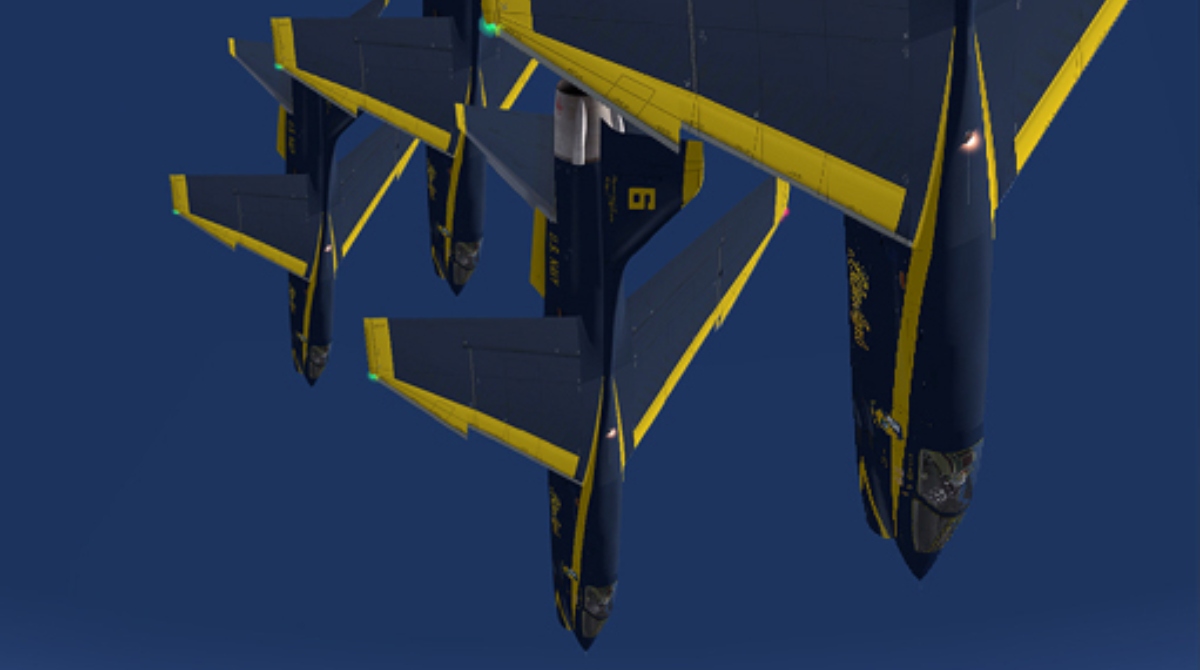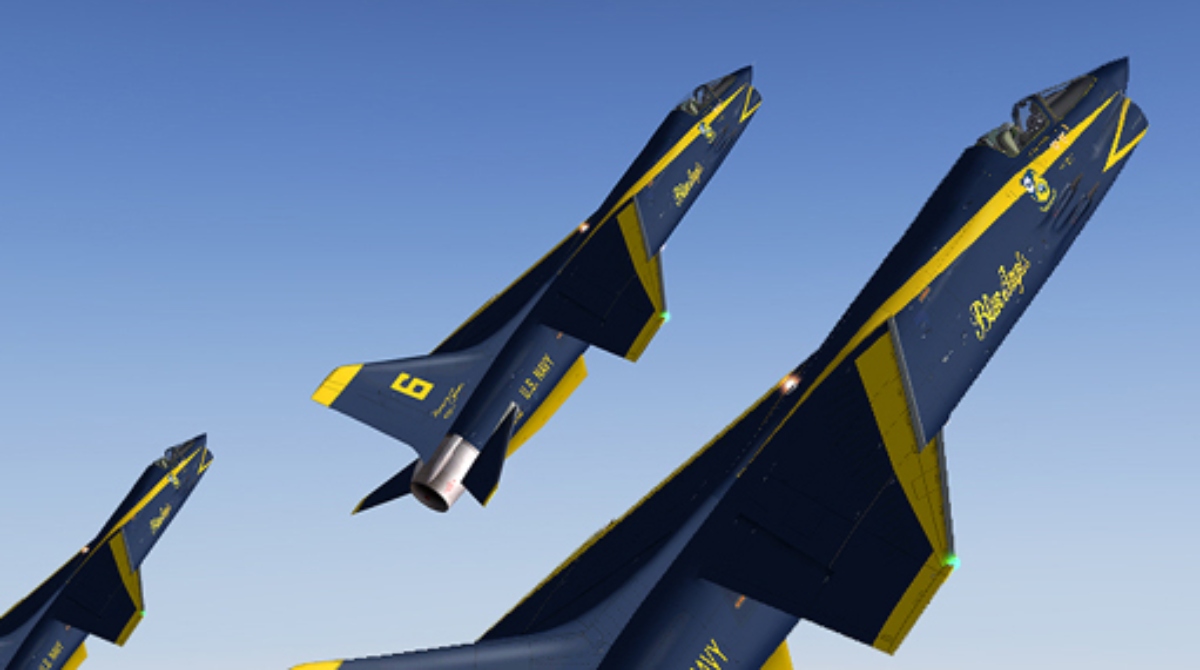At some point, the Crusader was considered as a replacement for Blue Angels Grumman F11 Tigers.
One of the most capable fighters of the post-World War II era, the F-8 Crusader was a sleek design that featured a gaping jet intake beneath the fuselage and a variable-incidence wing that could be raised to enable the aircraft to land and take off at slow speeds while maintaining excellent visibility for the pilot. In an era in which fighter pilots relied increasingly on missiles, the Crusader retained 20mm cannon, prompting its pilots to call it the “Last of the Gunfighters.”
Crusaders flew their first combat missions triggering cameras instead of weapons as part of the photo-reconnaissance flights over Cuba during the Cuban Missile Crisis in October 1962. F-8s also logged these missions as well as strike and combat air patrol flights throughout the Vietnam War, with Crusader pilots credited with the downing of eighteen enemy MiGs in aerial combat.

At some point, the Crusader was even considered as a replacement for Blue Angels Grumman F11F Tigers. But, as explained by Nicholas A. Veronico in his book The Blue Angels a Fly-By History, at that time (it was 1968) the Vietnam War was on and available aircraft types for the Blue Angels to transition to were limited. The team needed a new airplane but had not decided on what type. Then Team Leader Bill Wheat had considered the Vought F-8 Crusader, but the company was going out of the aircraft business just as the F11F production line was shutting down. Both aircraft were going to be hard to support in the near future. There were no F-8s available because of the conflict in Vietnam, and all of the McDonnell Douglas A-4s were required to meet the fleet’s commitments. In the end, the F-4 Phantom was chosen to replace the F11F with the Blue Angels.
But how would the F-8 be for the Blue Angels?
According to VFP62.com, there were discussions of F-8 fighter pilots on the F-8 for Blue Angels.
According to their assessment, there were several concerns.
The first concern was for an inverted flight. Aileron rolls were limited to just one at a time, and loops on takeoff were mentioned as the first limitations. Other pilots mentioned that the F-8’s variable incidence wing caused inherent problems of section takeoffs. “It was too hard to go through the wing-up/wing-down routine in real close formation and look good.”

The difficulty of flying F-8s in tight formations such as the Blues fly was another concern that F-8 pilots had. One pilot commented, “One finds out his own wing tip is almost touching the UHT of the other aircraft. You simply cannot get these machines that close. We had to fly farther out—it looked pretty good but is much harder to maintain the exact position. Just place two F-8 models together and this reality is easily seen.”
Moreover, the F-8 had a hard-lighting afterburner which might cause a section takeoff to look uncoordinated with one aircraft or another changing lead position.
However, many F-8 pilots believed that these issues could be worked out, as they were for the various aircraft used by the team. For instance, the flight control system of the A-4 was completely redesigned for their use.
One pilot put it in good terms: “Good airshow planes need three things: noise, smoke, and danger (imminent chance of an accident). F-8 had all in spades. I like the current F-18s but they don’t look very dangerous.”
For more interesting news and info about US Navy Blue Angels and other display teams check out the Aerobatic Display Teams website
Photo by AVSIM.net

